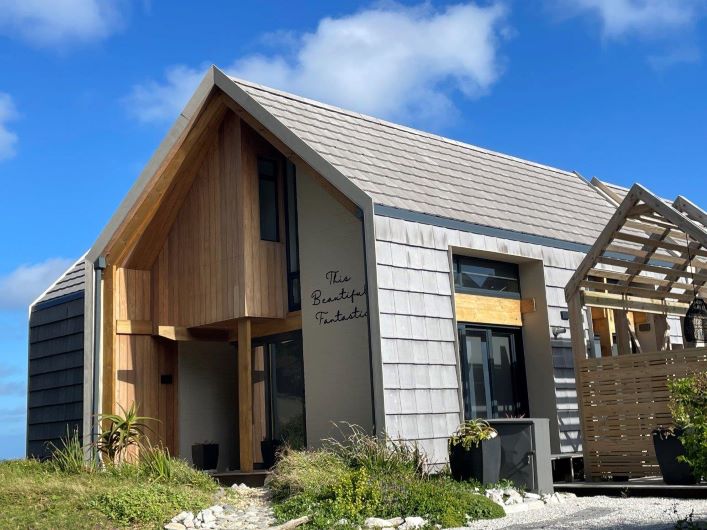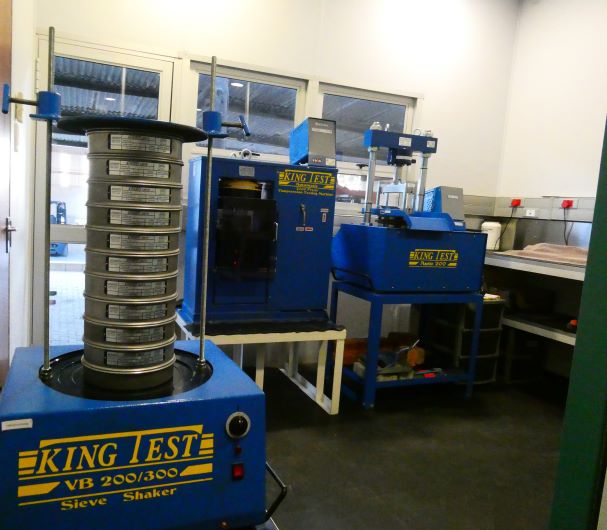
Image: Eagle Roof Tile’s slate grey shingle as seen on this A-frame with exposed gables in Eerste Rivier, Western Cape, was used to cover the roof and clad the vertical sides. credit: David Beer
Written by David Beer on behalf of the Concrete Manufacturers Association
Over the years the Concrete Manufacturers Association (CMA) has commissioned several independent surveys which demonstrate how concrete roof tiles outperform their rival materials across a host of performance criteria.
More recently, Port Elizabeth’s Eagle Roof Tiles commissioned its own cost comparison study between a concrete tile roof and a corrugated metal roof. The company has had a longstanding relationship with the CMA and uses its certification arm, CMACS, to certify Eagle’s tiles which are produced to SANS 542 specifications.
“We focus on three Cs when comparing the performance of concrete roof tiles with metal-sheeted roofing, namely, Cost (initial cost and maintenance), Comfort (peace of mind, thermal and noise dampening performance) and Creativity (style and beauty),” says Tarn Derman, general manager of Eagle Roof Tiles.
“We decided to re-visit the cost aspect in an updated appraisal and to that end we commissioned an ITC SA certified truss fabricator, Africa Timbers, to run a comparative cost study between a concrete tile roof and a metal sheeting roof in September 2023.
“Africa Timbers followed a common roof design to allow for the most accurate and fairest cost comparison and the use of MiTek design software validated the engineered design and material costs of both roofs. The costing exercise covered complete roof structures from the wall plates and above, but excluded facias and bargeboards.
“The study was based on an average-sized house of 161m² with an intersecting gable and hip-roof design pitched at 25°. Double Roman through-colour roof tiles and 0.47 corrugated sheeting F/H, the cheapest acceptable sheeting for this type of house, were the two materials chosen for the comparison.
The total cost for the metal roof was R154 748, comprising R76 468 for roof trusses and fixtures and R78 280 for the roof sheeting. The total cost for the concrete tile roof was R116 216, comprising R88 254 for roof trusses and fixtures and R27 961 for the concrete tiles.
“This represents a substantial saving of just under R40 000, or 33% less for the concrete roof tile house, an amount which could be used towards countering load-shedding or to contribute to a child’s education.
“It is clear from the above that concrete roof tiles are the most economical roof cover and the savings will be even greater over the lifetime of the roof as the maintenance on concrete roof tiles is virtually zero.
“A major comfort factor with concrete roof tiles is the associated peace of mind in knowing that they almost never have to be replaced. Since they were first introduced to the South African market over 70 years ago they are still protecting homes with minimal fuss. Due to their large thermal mass, they absorb high levels of energy when it is warm and then slowly release the accumulated heat at night when it is colder, ensuring a comfortable interior,” says Derman.
In order to prove that concrete roof tiles are considerably more thermally efficient than metal sheeting, in 2012 the CMA commissioned the AAAMSA Group to run a series of tests comparing the thermal performance of metal sheeting roof with a concrete tile roof. One of the tests, which involved roofs with ceilings, revealed R-values of 0.38 for the metal roof as against 0.49 for the concrete tile roof, a 29% comfort factor improvement.
“Concrete roof tiles are also vastly more efficient noise insulators. Metal roofing, especially when used in working environments such as schools and government buildings, have to be installed with far more insulation material to damp down noise from rain, hail and wind to reach tolerable levels.
“Creativity with concrete roof tiles is only limited by one’s imagination and really broadens one’s design horizons. Tiles can be cast in innumerable colour choices for enhanced beauty and they allow designs with hips, gables, mono or duo-pitch, modern or traditional which add individuality and value to any house. They are definitely the best roofing material available, and can convert any house into a home” concluded Derman.
More news
- PART 2: CONCRETE IN THE DESIGN OF A UNIQUE LUXURY HOME IN GEORGE, SOUTH AFRICA
- PART 1: CONCRETE IN THE DESIGN OF A UNIQUE LUXURY HOME IN GEORGE, SOUTH AFRICA
- MVULE GARDENS, AFRICA’S LARGEST 3D-PRINTED AFFORDABLE HOUSING PROJECT
- PART 3: HARNESSING THE POTENTIAL OF HIGH SULPHUR FLY ASH IN CONCRETE PRODUCTION
- PART 2: HARNESSING THE POTENTIAL OF HIGH SULPHUR FLY ASH IN CONCRETE PRODUCTION


